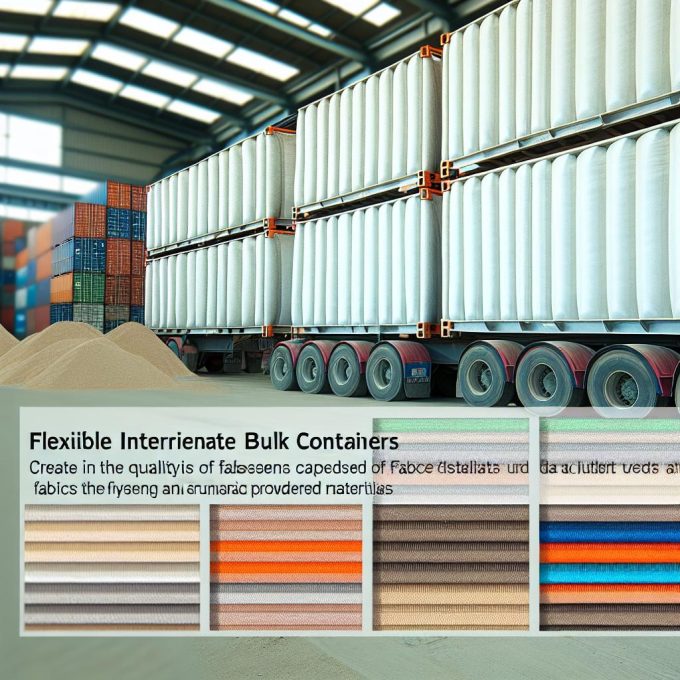Understanding Flexible Intermediate Bulk Containers (FIBCs)
Flexible Intermediate Bulk Containers (FIBCs), widely known as bulk bags or big bags, are indispensable in the industrial sector for their role in storing and transporting a diverse array of dry, flowable products. Leveraged extensively in industries that handle materials like sand, fertilizers, and plastic granules, these containers exemplify durability and efficient design, catering to the high demands of large-volume material handling.
Materials and Construction
The robust build of FIBCs is attributed to their composition of woven polypropylene fabric, a material highly favored for its lightweight yet exceptionally strong properties. The choice between coated and uncoated fabric depends on specific usage requirements, with coatings offering added protection against moisture and dust, thus broadening their applicability. The construction technique not only features a foldable design for ease of storage but also ensures that the bags can be fully expanded when in use, allowing for optimal capacity utilization. Standard components such as the filling spout, discharge spout, and lifting loops are meticulously designed to facilitate seamless handling, typically utilizing forklifts or cranes to transport the filled containers efficiently.
Types of FIBCs
When examining FIBCs, it’s crucial to understand the variants that cater to different needs and environments:
1. **Standard FIBCs**: These are versatile containers used predominantly for non-hazardous materials where basic protection from environmental elements suffices.
2. **Conductive FIBCs (Type C)**: Built specifically for scenarios involving flammable materials, these FIBCs are designed with safety in mind. Functioning effectively in environments filled with flammable gases or vapors, they require proper grounding to avoid static electricity buildup.
3. **Food-Grade FIBCs**: These containers adhere to stringent hygiene norms and are produced in cleanroom environments. They cater to the food industry by ensuring that consumables are transported without compromising on hygiene standards.
Applications of FIBCs
The widespread utility of FIBCs across various sectors can be attributed to their inherent versatility and cost-effectiveness. Their applications are expansive and include:
– Agriculture: Serving as a vital component in the transport of seeds, grains, and fertilizers, these containers support the agricultural supply chain efficiently.
– Mining: Integral to the mining industry, they aid in the movement of bulk minerals and ores, ensuring secure and efficient material handling.
– Chemicals: Ideal for the chemical sector, FIBCs are employed in transporting raw materials and finished products, streamlining logistics within chemical manufacturing.
– Construction: Essential in construction projects, they manage heavy materials like sand and gravel, contributing to material handling and storage efficiency on worksites.
Advantages of Using FIBCs
The advantages of FIBCs extend beyond merely handling large volumes. Their high load capacity and ease of handling significantly reduce the manpower necessary for material movement, expedite the processes of loading and unloading, and curtail packaging waste significantly. Moreover, FIBCs’ capabilities to be reused and recycled enhance their appeal as a sustainable, environmentally conscious choice in industrial packaging.
In the interest of acquiring more in-depth technical specifications and exploring varied use-case scenarios, industry professionals can consult resources from the Flexible Intermediate Bulk Container Association (FIBCA), which provides additional insights and updates pertinent to the effective utilization of FIBCs in different industrial contexts.
Through their design and functionality, Flexible Intermediate Bulk Containers (FIBCs) represent a crucial component in modern industrial operations, enabling efficient material handling, reducing logistical costs, and supporting overall operational goals. Whether addressing the needs of agriculture, mining, chemicals, or construction, these containers continue to play a pivotal role in supporting and enhancing the supply chains upon which industries depend.

